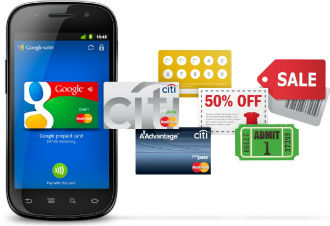 NFC has been around in select high-end phones for years, and Google has included NFC support in every Nexus handset dating back to the Nexus S, which launched in late 2010. However, Apple and a few other names were not as keen to embrace it.
NFC has been around in select high-end phones for years, and Google has included NFC support in every Nexus handset dating back to the Nexus S, which launched in late 2010. However, Apple and a few other names were not as keen to embrace it.
Tag: retail
Tesco sales slide in first quarter
 Britain’s biggest retailer has reported a one percent slide in UK sales for its fiscal first quarter, ending 25 May, but things are even worse in Europe with a 5.5 percent slump.
Britain’s biggest retailer has reported a one percent slide in UK sales for its fiscal first quarter, ending 25 May, but things are even worse in Europe with a 5.5 percent slump.
Tesco’s results are worse than expected, despite the fact that the chain spent £1 billion to boost UK sales.
High street apocalypse on its way
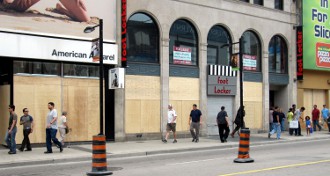 The UK is “facing a crisis,” when it comes to highstreet shopping, a retail group has warned.
The UK is “facing a crisis,” when it comes to highstreet shopping, a retail group has warned.
According to the Centre of Retail Research, one in five of Britain’s high street shops could close by 2018 as more customers turn to the internet for their shopping. The analyst company warned that, as a result, around 62,000 shops could close in the next five years – putting around 316,000 jobs on the line.
A further 164 major or medium-sized companies were also predicted to go into administration, involving the loss of 22,600 stores and 140,000 employees.
“Many of these companies will survive but at the cost of closing more than half their stores,” the company said.
Retail Futures 2018 forecasts found that consumers were shunning the high street with the share of consumer spending declining from 50 percent in 2000 to a predicted 40.2 percent next year. As fewer shop in stores, online retail is set to account for 21.5 percent of total retail sales by 2018, from 12.7 percent today, the highest online retail share in the world.
It also pointed out with such a high number of transactions carried out online, retailers with a strong web offering now need just 70 high street stores to create a national presence compared to 250 in the mid 2000’s.
Wales and the North West are predicted to see the highest number of closures, with nearly one in three expected to fold, while the South East is expected to see a 13 percent decrease in the number of shops by 2018.
Samsung Young in shops this weekend
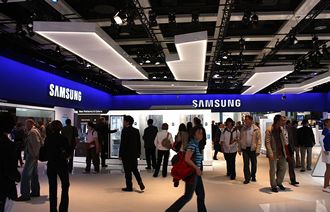 Samsung’s Galaxy Young, an Android smartphone running Jelly Bean, will be available through retail channels and networks this weekend.
Samsung’s Galaxy Young, an Android smartphone running Jelly Bean, will be available through retail channels and networks this weekend.
The Young is a 1Ghz device with a 3.2″ HVGA TFT display and a 3 megapixel camera. It will ship with the usual torrent of Samsung extras loaded into Jelly Bean including TouchWiz, Kies, Apps and Hub, but where the company wants to differentiate is with its integration with Dropbox.
Of course, there are other cloud services available, including Google Drive, and Dropbox is available to download for free from the Google Play store anyway.
The device comes with 4GB internal storage and will be available in different colours.
The mid-range smartphone is not exactly a flagship device but is more affordable for those who can’t justify splashing out on an S4. Samsung has said it will be available from a “number of networks and online retailers”, but the Carphone Warehouse and O2 are the ones it specifically mentions.
Store stays as hub for connected customers
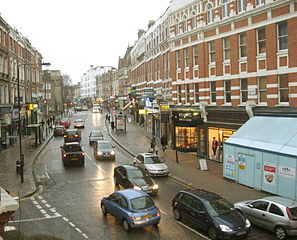 A pan-European retail survey commissioned by Fujitsu reveals that most retailers believe stores are still important despite the fact that online shopping is going mainstream.
A pan-European retail survey commissioned by Fujitsu reveals that most retailers believe stores are still important despite the fact that online shopping is going mainstream.
Even in the age of multichannel, 65 percent of Europear retailers interviewed said they believe the importance of stores is rising rather than diminishing. However, eight out of ten believe online is the top distribution model for the future.
The survey found that the humble store will continue to serve as a hub for retail engagement with “connected” consumers. Ongoing competitive pressures and the widespread adoption of smartphones will force retailers to combine the efficiency of online, while at the same time delivering a good in-store customer experience.
It echoes the findings of a recent Google survey, which concluded smartphones are slowly starting to improve the shopper experience both at home and in actual retail stores. In other words, retailers cannot afford to ignore either component of their multichannel approach. Fujitsu’s survey also stresses the importance of a unified view of all customers across all channels, on top of technology innovations designed to deliver new multichannel solutions.
Retail managers in some countries believe the importance of stores is going up, especially in France and to some extent in Italy, which is also betting on hypermarket and supermarket models. However, German retailers believe online shopping is currently more attractive to their customers. In the UK, however, there is a greater balance across all models.
“It is clear the store remains the shopping ‘hub’ for the majority of consumers across Europe, but the store operating model is changing rapidly to meet the needs of the multichannel shopper.” said Richard Clarke, Vice-President, Global Retail at Fujitsu. “Fujitsu helps retailers to achieve this goal by simplifying their technology deployments and radically increasing agility and customer intimacy.”
Although e-taliers and m-commerce are still on the rise, the study found that traditional retailers are still convinced there is plenty of room for brick-and-mortar stores in the future of retail, no matter how connected it might be. However, service is slowly becoming a key value-add for the store, and some hybrid services such as click and collect are also emerging. Interestingly, British retailers lead the way when it comes to their confidence in traditional stores and their role as a shopping point.
Apple retail revenue is $58 per customer
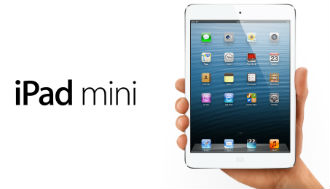 Apple has been in the news for all the wrong reasons lately. Its falling share price has been a source of concern for Wall Street, the lack of revolutionary products is another, and a big gap in the update cycle is yet another. However, Apple’s retail operations are going from strength to strength.
Apple has been in the news for all the wrong reasons lately. Its falling share price has been a source of concern for Wall Street, the lack of revolutionary products is another, and a big gap in the update cycle is yet another. However, Apple’s retail operations are going from strength to strength.
In fact, the average Apple consumer who happens to walk into a retail store nets the company $57.6, twice as much as shoppers who enter Tiffany shops, minus those who ask for breakfast. According to Apple’s latest financials, retail numbers are still going strong, reports Hot Hardware.
The number of average visitors per store was about 250,000 per quarter, up from 170,000 in the same period three years ago. It is worth noting that the iPad launched three years ago, which should explain the sudden spike in numbers. However, the iPad mini was introduced last year and it does not seem to have had much of a negative impact on retail spending, despite the fact that it is significantly cheaper than the full size iPad.
In addition to the second generation iPad mini with a high resolution display, Apple is widely expected to introduce a cheaper version of the iPhone later this year. Although it is supposed to be designed with emerging markets in mind, a cheaper iPhone could also cannibalize sales of the flagship iPhone in developed markets. The exact same trend was observed in the quarters following the iPad mini launch.
With that in mind, the average Apple retail consumer might start to spend a bit less, as more and more of them are likely to opt for the iPad mini and cheaper iPhone over their bigger and pricier siblings.
Rich people prefer online shopping
 Although there are thousands of penny pinching price comparison sites out there, it seems online shopping is pretty big among affluent consumers who really don’t need to save at all. According to research released by the Shullman Research Centre, the rich love to do their shopping online. Apparently they don’t want to mix with their serfs, for whatever reason.
Although there are thousands of penny pinching price comparison sites out there, it seems online shopping is pretty big among affluent consumers who really don’t need to save at all. According to research released by the Shullman Research Centre, the rich love to do their shopping online. Apparently they don’t want to mix with their serfs, for whatever reason.
The survey found that the vast majority of affluent consumers tend to research products online and make the purchase from an online device. Most of them still rely on desktops, at 64 percent, while tablets and smartphones are used by 18 and five percent respectively.
“I do not think luxury marketers are totally aware that [consumers] are using online for research and are getting comfortable buying that way,” said Bob Shullman, founder and CEO of the Shullman Research Center. He added that consumers enjoy convenience and that is exactly what online shopping is supposed to deliver.
To some extent it sounds a bit counter intuitive, as one would expect people to actually touch and feel upmarket merchandise before reaching for their credit card, but in reality just 10 percent of affluent consumers said they prefer researching in-store as opposed to online. Furthermore, 62 percent said they are comfortable using online services to buy stuff, while just 33 percent said they felt comfortable buying in person at a brick and mortar store.
However, rich people don’t shy away from mass marketed products, either. The survey found that 73 percent of them made purchases on Amazon in the past year, which means Amazon is the top service for rich folk and proles alike.
Gmail to let users attach cash to emails
 Among the flurry of announcements at the hours-long Google IO conference yesterday, there was one that threatened to step on Paypal’s turf – sending cash will soon be as simple as sending an email.
Among the flurry of announcements at the hours-long Google IO conference yesterday, there was one that threatened to step on Paypal’s turf – sending cash will soon be as simple as sending an email.
Provided you have a Google account set up for Google Wallet with your bank, at least in the US it is now possible to send cash for free, and all you have to do is click on a $ sign under attachments. You can link up credit or debit cards as well, which Google promises will charge low fees – a flat fee of 2.9 percent. Receiving money is free.
Users will be limited to sending $10,000 per day, or $50,000 for each five day period, which will be more than enough for most casual users. Google says sending money with your Google Wallet balance is always free and “usually instant”.
For now Google is rolling out the feature to all US Gmail users who are over 18, and earlier access will be available if friends have the feature and are actively using it.
Google also says it has purchase protection which “covers you 100 percent against eligible unauthorised payments”.
The service, if it picks up, could threaten to bite at Paypal’s ankles. It doesn’t take much searching online to find complaints about the latter, and casual users are likely to be particularly interested. For small trading, sending a protected payment via email is going to be quick and easy.
Still, there will be those turned off by such services. Having an account phished or simply compromising your own password potentially puts your cash at risk.
Smartphones improve in-store shopping experience
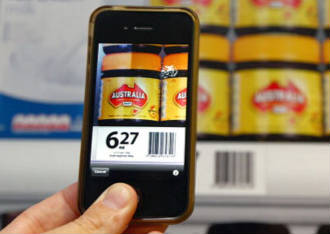 Although mobile commerce is still experiencing teething problems in most markets, a growing number of consumers are turning to smartphones to improve their shopping experience. Even when they are not making actual transactions, they are using their smartphones to learn more about products and services.
Although mobile commerce is still experiencing teething problems in most markets, a growing number of consumers are turning to smartphones to improve their shopping experience. Even when they are not making actual transactions, they are using their smartphones to learn more about products and services.
Gartner gives advice to shops
 Demand driven retail success is dependent on getting a range of factors right, Gartner has said.
Demand driven retail success is dependent on getting a range of factors right, Gartner has said.
According to the company, defining the role of supply chain, span of control and metrics maturity are the key to retail success.
Demand-driven retailing is based on a range of technologies and processes that analyze and capture consumer behaviour. This is then teamed up with demand, supply and product analysis in a bid to to fulfil customer expectations, improve operational performance and in turn give a profitable response across a network of suppliers, employees and sales channels.
In a survey of retail industries in North America, Western Europe and Asia/Pacific, the company said that there were three important bit to getting this right.
Firstly the supply chain, which Gartner pointed out varied in role by retailer, was
named as one of the key things to help businesses with their strategy. It said its survey highlighted that 64 percent of respondents were more likely to deliver return on assets (ROA) of greater than 16 percent when using this chain properly.
The supply chain so-called “span of control” was another factor highlighted by the company, which said although the role of the supply chain may differ by retailer, the best shared one common trait — they define their supply chains more inclusively than their peers.
It said many retailers use a narrow span of control (such as distribution centre [DC] operations, transportation and procurement) to define their supply chains.
Smarter retail supply chains went a step further and broadened the span of control to include forecasting, replenishment, new product launch and sourcing responsibilities.
Finally, Gartner said that establishing a robust set of end-to-end supply chain metrics was also an important factor with many retailers today measuring aspects of their supply chains, but also identified a need for a more-comprehensive measurement program.
UK retail sector healthier than in last two years
 At its latest quarterly meeting in April, the KPMG/Ipsos Retail Think Tank (RTT) came to the conclusion that the health of the UK retail sector is improving.
At its latest quarterly meeting in April, the KPMG/Ipsos Retail Think Tank (RTT) came to the conclusion that the health of the UK retail sector is improving.
The RTT upped its Retail Health Index by one point to 77 points, the best result in two and a half years.
The RTT cited a marginal lift in demand as the main factor underlining the recovery and things could have been even better had the first quarter of the year not been marred by unusually cold weather. Christmas sales were strong, the food sector performed exceptionally well and the decline in footfall, caused by wintry weather, did not hurt overall demand. Gadgets also did well, as consumers decided to stay indoors and chuck Angry Birds on their shiny new tablets.
However, retailers’ margins weren’t as good. Food margins remained flat and margins on technology products remain low. Costs stayed flat. Although multichannel operations continued to spend more on fuel and energy, this was offset by reductions in estate sizes and creative cost cutting measures.
The outlook for retail health in the second quarter is not so great and it is expected to stay flat, reports FreshBusinessThinking.com. Consumer confidence remains low, inflation is rearing its ugly face again, fuel and energy prices are set to rise, demand still looks very soft.
“Overall the quarter was quite an even one for UK retailers as demand, margins and costs all remained relatively static and it looks like we’re at the bottom of the decline,” said David McCorquodale, Head of Retail, KPMG UK. “The weather did affect demand in terms of footfall being down, but otherwise sales were largely ok.”
Authorize.Net lands in Blighty, Euroland
 Payment gateway Authorize.Net is now available for British and European merchants, dealing in GBP, EUR and USD. Authorize.Net is a small business solution from CyberSource, a Visa company. It is a popular payment platform designed to accept and manage card transactions, fight fraud and automate recurring transactions.
Payment gateway Authorize.Net is now available for British and European merchants, dealing in GBP, EUR and USD. Authorize.Net is a small business solution from CyberSource, a Visa company. It is a popular payment platform designed to accept and manage card transactions, fight fraud and automate recurring transactions.
Simon Stokes, managing director EMEA at CyberSource, said the platform is now able to cater to merchants of all sizes throughout the UK, ranging from home-based start-ups to the biggest enterprise merchants. He was quick to point out that Authorize.Net is the most popular payment gateway in the US. Currently more than 380,000 merchants use Authorize.Net stateside.
“We believe UK merchants will benefit greatly from Authorize.Net’s stability, ease of use, and award winning support,” said Stokes.
In addition to bank card processing, Authorize.Net also provides merchants with a virtual terminal and a website payments seal. It also supports recurring billing, a suit of fraud detection filters and secure data storage. CyberSource also likes to point out that Authorize.Net’s customer support has received quality awards for four years running, so timely support shouldn’t be an issue.
SMBs throw cash about
 Small and medium businesses are hiring dedicated e-commerce specialists in ever growing numbers.
Small and medium businesses are hiring dedicated e-commerce specialists in ever growing numbers.
According to a report from Freelancer.co.uk, SMBs are realizing that they need to offer safe and convenient online services, on par with the big boys. The number of businesses hiring e-commerce experts has gone up 19 percent in the first quarter of 2013.
Freelancer spokesman Matt Barrie stressed that the high street is already facing major problems due to the e-commerce boom. He warned that plenty of major retailers have already seen their businesses disintegrate because they lacked a good online presence. Smaller outfits seem to have learned their lesson, so they are investing in e-commerce in the hope of not becoming the next Jessops or HMV.
Barrie believes that even the biggest high street players could see their businesses go down the drain if they fail to embrace online shopping. It could be good news for smaller companies, as e-commerce could level the playing field and allow them to compete with bigger outfits, without much overhead. The web allows small companies to offer their goods and services to a much larger audience, so it could be used to their advantage.
Another aspect of the e-commerce revolution involves niche markets. Although they are diluted across the country, geography simply isn’t a limiting factor in e-commerce, which means that even tiny companies can cater to the entire niche market.
“Retail outlets are proving incapable of adjusting to a consumer base no longer geographically captive. E-commerce is dominating the consumer retail landscape,” said Barrie. “It’s no surprise that big name retailers that haven’t kept up with the online shopping revolution are increasingly going bankrupt. These high street dinosaurs are unwilling to compete, and so will soon be consigned to retail history.”
Big retail chains have all but monopolized the high street in recent years, but it seems e-commerce has the potential to reverse the trend and put independent retailers back on the map.
M-commerce continues to wow shoppers
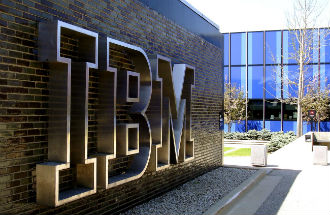 M-commerce is continuing to grow in the retail space, a report has suggested.
M-commerce is continuing to grow in the retail space, a report has suggested.
In its Online Retail Index IBM said that the new way to spend money has been growing in popularity with smartphone owners opting to use this over traditional means of shopping.
According to the report, mobile commerce grew by 31 percent in the first quarter of this year, up from the same time in 2012. It said the technology now accounted for 17.4 percent of all online retail sales. The figures were also up from 13.3 percent in the year-earlier period.
IBM said that the trend had grown as a result of many shoppers liking the freedom m-commerce offered, enabling them to shop more frequently and, in some cases, spend more money. It also pointed out that the growth of interactive technologies, such as augmented reality and QR codes, which offered discounts for shoppers using m-commerce sites, had helped boost the adoption of mobile commerce.
And tablets have also fuelled the shopping frenzy, with IBM noting this technology’s larger screens, navigation and easier touch functions made online shopping easier.
IBM said that the growth would continue as a result of retailers embracing the trend and offering their customers sites that catered for m-commerce.
Best Buy to sell European op to Carphone Warehouse
 Best Buy has decided to unload its 50 percent share in Best Buy Europe to its joint venture partner Carphone Warehouse in a deal valued at £500 million.
Best Buy has decided to unload its 50 percent share in Best Buy Europe to its joint venture partner Carphone Warehouse in a deal valued at £500 million.
Under the terms of the agreement, Best Buy will receive £420 million in cash and £80 million in Carphone Warehouse stock, subject to a 12-month lock-up restriction. Best Buy also agreed to pay Carphone Warehouse £29 million to settle obligations stemming from existing agreements, some of which will be terminated when the outfits close the deal.
The transaction has already been approved by the boards of both companies and it should be finalized by June 2013.
“After reviewing the business and spending time with our partners, we concluded that the timing and economics were right to enter into this agreement with CPW,” said Hubert Joly, president and chief executive officer of Best Buy.
Joly went on to say that the transaction will allow Best Buy to simplify its business, improve its return on invested capital and strengthen its balance sheet.
“Each international market is different and the sale of our European operations should not suggest any similar action in our other international businesses,” said Joly.
The joint venture was launched in 2008, with Best Buy paying $2.15 billion for its share of Best Buy Europe.





